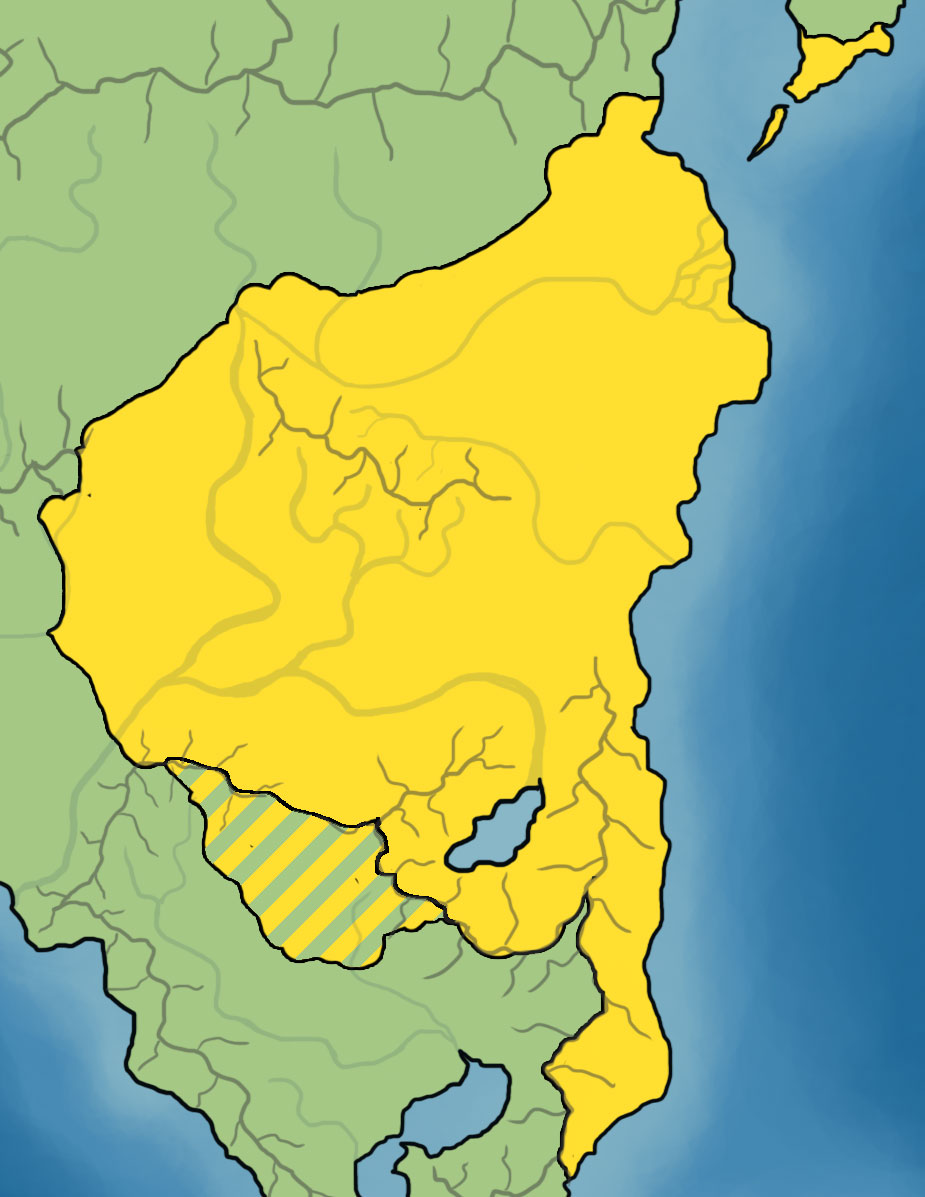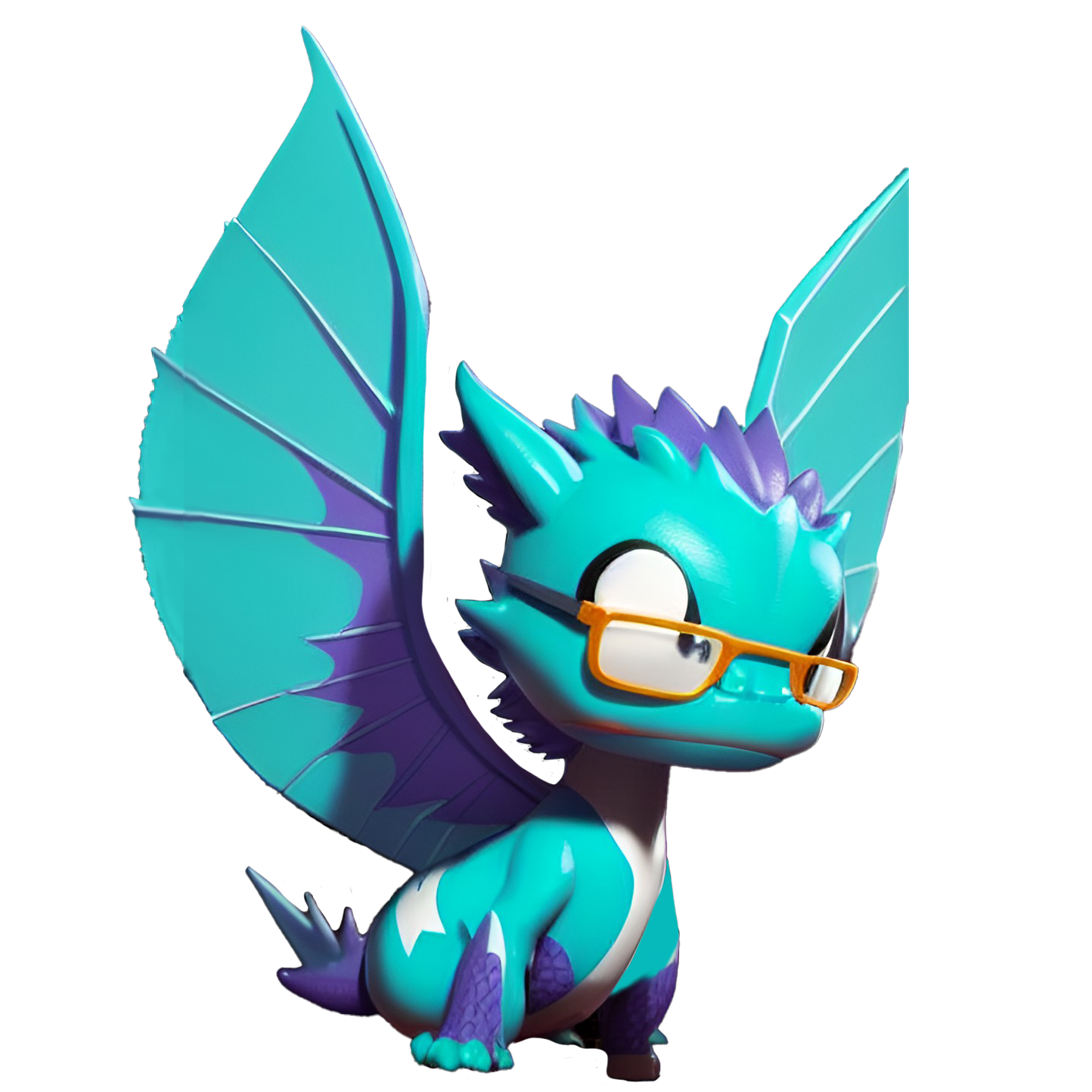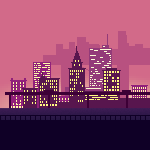Krin
The Old Lord
Remember, because we have lost doesn't mean we have fallen! You might not as strong as it is now without my ancestors' footsteps!
The Krin is referred to the people inhabiting the east coast and the midland of South Estisia - mostly between Ferson River and Gioson River, but normally they are referred to as the citizens of the Empire of Kritus, the around 1,200 years old nation that shaped the culture and history of this subcontinent. The most common knowledge about their influence seemed to be the extensive road network across the empire's territory, and the ground-breaking military to maintain its power. Although the Krins still remain their identity these days, their biggest influence is now down to only a few towns.
History
Krin began as a settlement called Knirk resided at the Golden Triangle where such two rivers met. At the time this region was full of conflicts and to stand still they must be strong. As they were growing from town to city, they managed to take control of the region and established the Empire of Kritus in 1247 BVE. Since then, they continued expanding themselves - slow and steady.
It took around half millennium to achieve their peak at 543 BVE, spreading the culture and authority across the midland, from the edge of the Grand Range to the part of the Gate Lowland, and from the end of the Dirwen River to the entire east coast.
It's no doubt that they became nothing but beyond superiority, which was what led to their decline. The obsession with the glorious past and the corrupted government destabilized the empire - slow and steady. During the last two hundred years, many colonies had declared wars of independence. The people of Krin lost power entirely when Knirk, the place they started it all, was besieged by the Valonians, their rival subculture, in 0 VE.
Afterward, the majority of them had migrated to the eastern republic, while the rest still lived at their hometown. It might take a few hundred years to be assimilated and integrated completely with Valonians, but that's what the future generations have to deal with.
Society
Family
The basic part of the Krin society is family. They can be any wealth and any social status. A family of husband and wife is considered one family with the addition of other wives and slaves.
Krin men are considered the head of the family, holding lawful authority over the family members and wealth. They are having full citizenship which means they can be recruited, vote, and go into politics. The eldest sons usually become the heir once they grow up into adults and the father either died or retired.
Krin women have restricted citizenship but are instead the head of the house. From preparing the meal and cleaning the house, to protecting the whole avenue while her husband is going to war. Although they don't have full house ownership whatsoever, this is essential in order to maintain the family, and so people expect the woman to become the mother or wife.
Classes
Prior to its fall, the highest status of the Krin society was the imperial family with the emperor as the leader. They were not only the head of government but state and religion - A single command could determine the fate of the people. The emperor worked alongside the senetors - the upper-class citizens who were generally the generals who went into politics but could also be the wealthy citizens with large business ownerships. Inside the senate, they could vote for the decision although the emperor's words were stronger, so they functioned as the emperor's advisory.
Normal citizens could be everybody who was born within the empire. They had the most variety of wealth and professions - mostly farmers, merchants, and of course - soldiers, who were the majority in the army.
However, Krin civilization heavily relied on slaves. They had no citizen right but the duty to work under the master's commands. The slave was either a prisoner of war, a captive from the invaded settlement, or a citizen who sought themselves. The population of slaves was so much it bothers many citizens.
The ex-slave would be known as freeman, who were able to own citizenship but not as much as the free-born citizens.
Culture
Culture and cultural heritage
Military
Military and Krin are intertwined. Winning a war is prestige and honor, and going to war can be the biggest opportunity of their life. Along with the massive land they had conquered, it's unsurprising for people to be seen as the warmongers.
Religion
Krin believed in multiple deities, but it started out with the god of war. Aside from the official one, the non-Krin believers are allowed to believe in their own religions. As these are the minority, they can be absorbed by the main one which is more effectively than eradicated. It's the one way for Krin to maintain peace, and that's why there are so many religions legally believed within the empire such as Luumism and the Temple of Gio.
Sports
Running. Swimming. Boxing. These are basic exercises which become local entertainment, but the most prestigious and popular is the chariot racing. Stadiums can be found in every city and each of them might have at least one team to join in the national competition, every 5 years.
Gladiatorial combat is also another popular sport. People watch the gladiators fighting each other to die. It was the easy yet brutal way for slaves to get freed.
Art & Architecture
Marble and concretes are used as the main construction materials. Posts decorated with floras in a symmetrical pattern can be found in various Krin cities even the ruins. It's also sculpted into several statues dedicated to their beliefs, emphasized in every detail even the eyelashes, from the deity to the great leader who's also the deity.
The Great Library of Kriton is an example of architectural marvels. A gigantic Parthenon-style building represents not only the longevity of knowledge but also represents the longevity of itself, as it is standing there for almost a millennium without any deterioration.
Foods & Cuisine
Millets are considered an essential part of Krin cuisine. it's cooked into porridges and various types of bread as their staple foods. At the end of the harvest season, the festival dedicated to the millet was held to celebrate the hard work of farmers as well as to worship the god of harvest.
The other ingredients can be seen in different local stews which includes but not limited to: celery, leeks, onions, carrots, lettuce, cabbage, garlics, and meats such as lambs and fishes. They like to season the meal with a fish sauce made in the east and peppers cultivated from the northwest.
Common Dress code
The Krin citizen always wear tunics regardless of social classes. Tunics are mostly made of dark coarse wool, whereas the upper-class tunic whose tunics are made of white wool or linen. On formal occasions, the toga would be worn. The people also have footwear like sandals, so common that even slaves are wearing them.
The thread being used in these garments is dyed in various colors such as red, yellow, and grey, which can be found in those of commoners. White is considered for the upper-class people, and purple is considered for the imperials.
Average technological level

Krins are no doubt the engineering expert. Many structures they built like aqueducts, dams, bridges, and roads are so ever-lasting that still using them even though some paths are thousand years old.
The biggest of them is the extensive road network connecting every settlement which all led to Knirk. Spanning across the South Estisia, it's so wide that you can start traveling from the west coast to the east coast, while still on the same road.
In addition to engineering technology, they are also doing great with the military. Their legion formation is gigantic yet organized and fast-maneuver. Their good metalwork provides high-quality weapons and equipment such as gladius and scutum. This was not included the development of torque-based siege machines which could crumble every city wall like pillars of sand.
The invention of legionary and siege machines had been told by many civilizations as effective. Many former colonies widely adapted this formation and after centuries, the trail of it still remains.
Major Organizations
Civilizations establised and ruled by the Krins:Empire of Kritus Taestic Republic Civilizations establised by the Krins but not ruled by the Krins:Protectorate of Erkin Valonia Empire Civilizations unrelated to Krins but once under their influence:Kingdom of Ohun Duris
The Old Lord
The term described by former Krin colonies especially the Valonians, who's being demonized by the empire a few decades ago.
Remove these ads. Join the Worldbuilders Guild
























Congrats on this first draft! I liked the expected parallels with the very real roman empire and its legacy. Nice choice of artworks, as well. I noticed a few grammar and wording issues, which is fairly normal in a first draft like this. Looking forward to see the completed article!
Thank you! :3